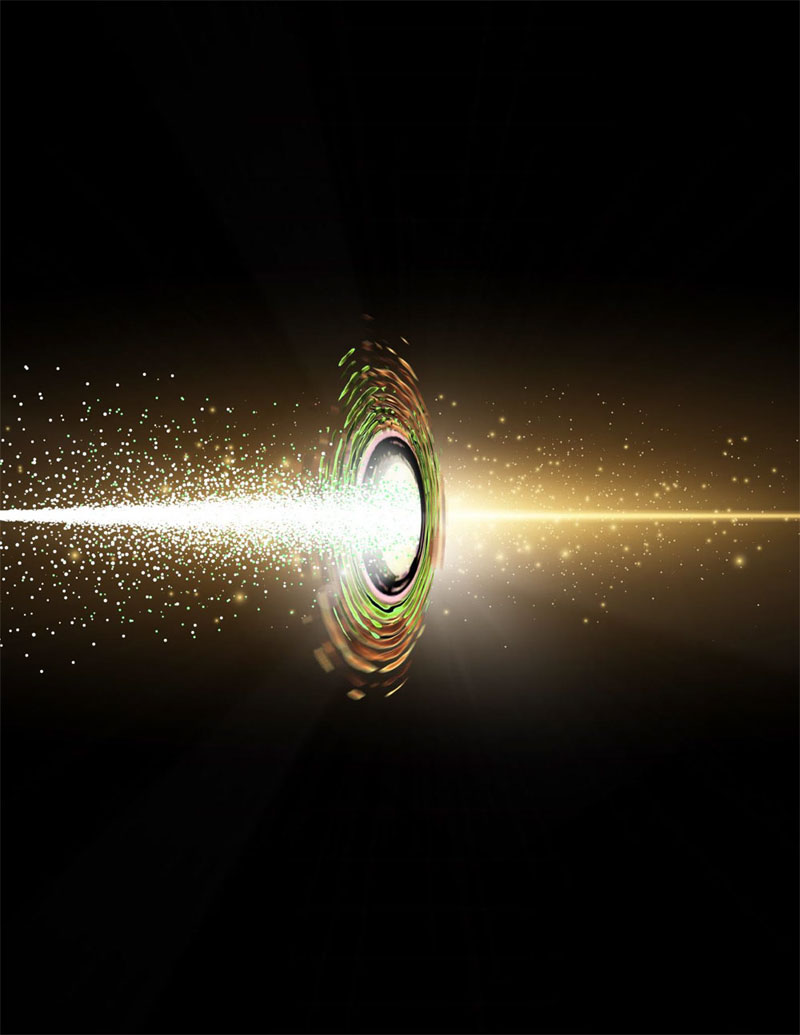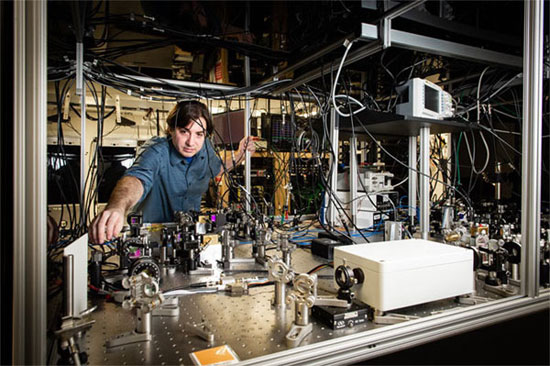BATON ROUGE, La., March 26, 2019 — Researchers at Louisiana State University (LSU) have defined a broadband, off-resonance measurement of quantum radiation pressure noise (QRPN) in the audio band, at frequencies relevant to gravitational-wave detectors. Their work could lead to methods to improve the sensitivity of gravitational-wave detectors by developing techniques to mitigate imprecision in back action measurements, thus increasing the chances of detecting gravitational waves.

LSU Department of Physics & Astronomy associate professor Thomas Corbitt and his team present a broadband, off-resonance measurement of quantum radiation pressure noise in the audio band, at frequencies relevant to gravitational wave detectors. Courtesy of Elsa Hahne, LSU.
The researchers developed devices, housed in miniature models of detectors like LIGO, that made it possible to observe quantum effects at room temperature. The devices consist of low-loss, single-crystal microresonators pioneered by Crystalline Mirror Solutions (CMS). These microresonators enabled the realization of an optical interferometer in which the ultimate sensitivity of the system is limited by QRPN.
The micromirrors manufactured by CMS were used to develop a testbed optical cavity that can now be employed to study techniques to mitigate fundamental noise processes such as QRPN. The testbed will be key for realizing improvements in the performance and reach of future gravitational wave observatories.
Each mirror pad is the size of a pin prick and is suspended from a cantilever. When a laser beam is directed at one of the mirrors, the beam that is reflected induces enough fluctuating radiation pressure to bend the cantilever structure, causing the mirror pad to vibrate and create noise.
The noise spectrum obtained by the team shows effects due to QRPN to be between about 2 kHz and 100 kHz.
To minimize the uncertainty caused by the measurement of discrete photons and maximize the signal-to-noise ratio, gravitational wave interferometers use high-power lasers. These high-power beams increase position accuracy, but do so at the expense of back action in the form of QRPN. Advanced LIGO and other second- and third-generation interferometers could be limited by QRPN at low frequencies when running at their full laser power, but the work of the team, which also includes collaborators at MIT, Crystalline Mirror Solutions, and the University of Vienna, offers clues as to how scientists can work around this limitation when measuring gravitational waves.
“Given the imperative for more sensitive gravitational wave detectors, it is important to study the effects of quantum radiation pressure noise in a system similar to Advanced LIGO, which will be limited by quantum radiation pressure noise across a wide range of frequencies far from the mechanical resonance frequency of the test mass suspension,” said professor Thomas Corbitt.

Professor Thomas Corbitt in his lab, setting up a sequence of lasers. Courtesy of Elsa Hahne, LSU.
Proposals to improve the sensitivity of gravitational-wave detectors exist, but until now, the researchers said, no platform has allowed for experimental tests of these ideas.
“This breakthrough opens new opportunities for testing noise reduction,” said Pedro Marronetti, a physicist and National Science Foundation program director. “The relative simplicity of the approach makes it accessible by a wide range of research groups, potentially increasing participation from the broader scientific community in gravitational wave astrophysics.”
The research was published in Nature (https://doi.org/10.1038/s41586-019-1051-4).